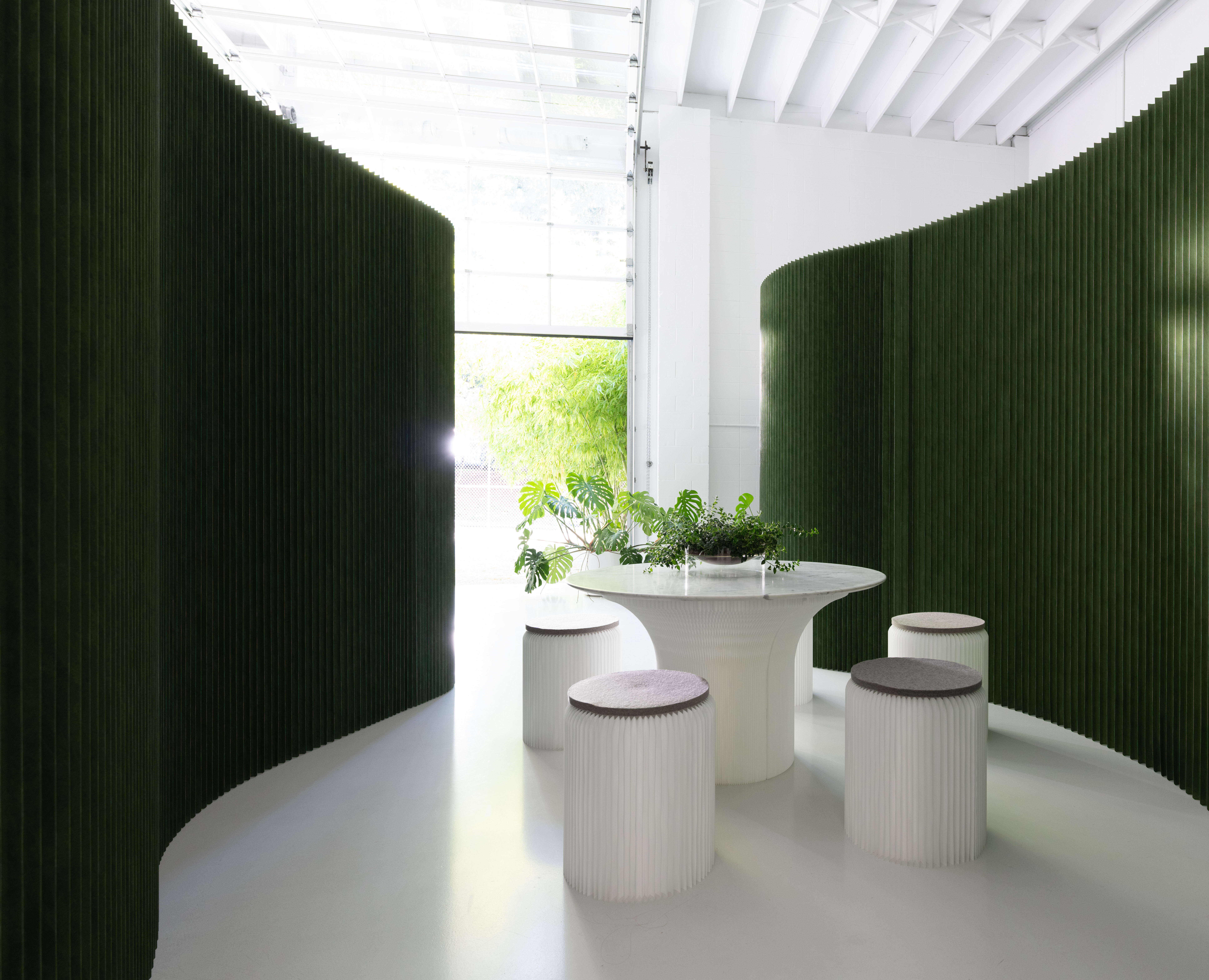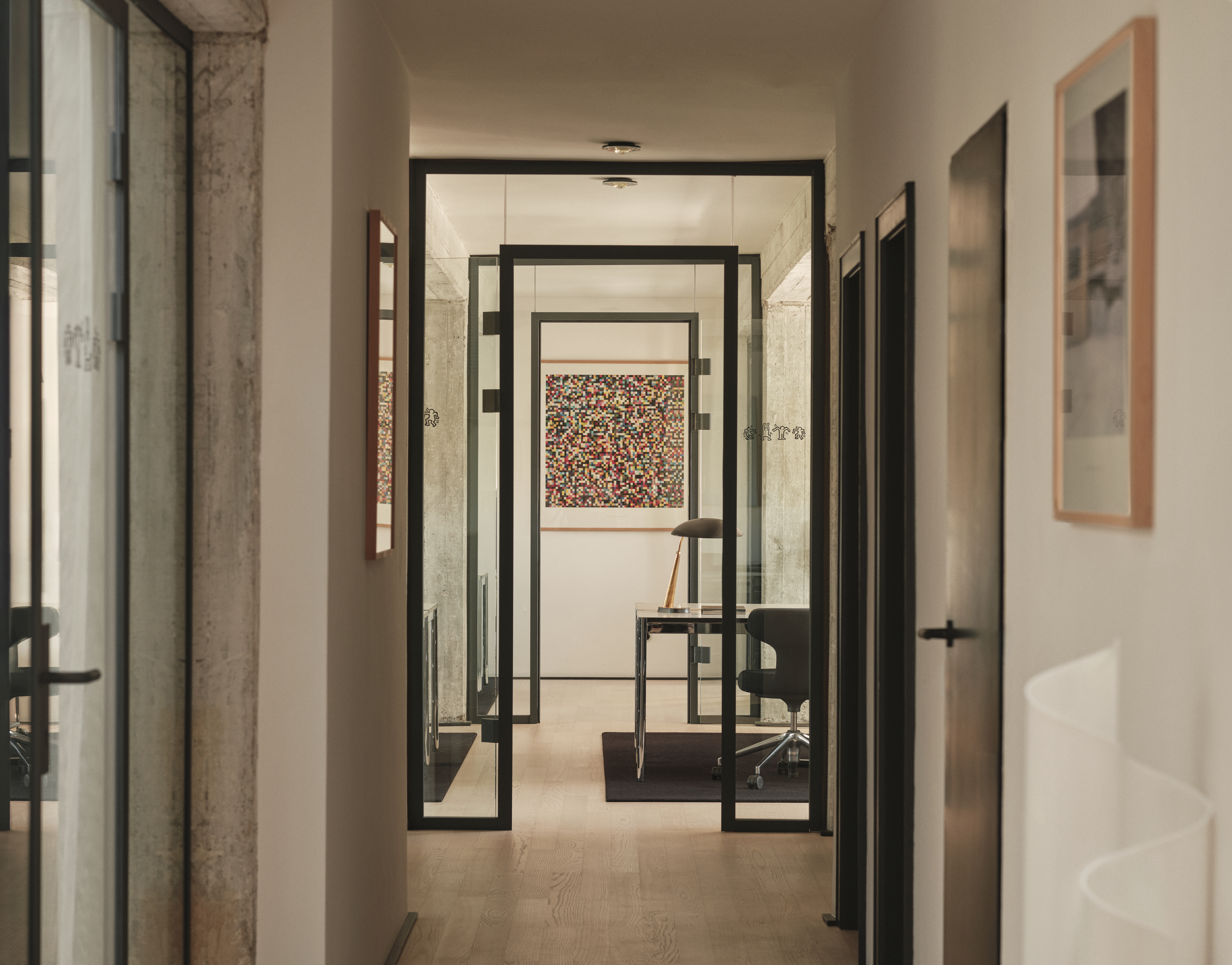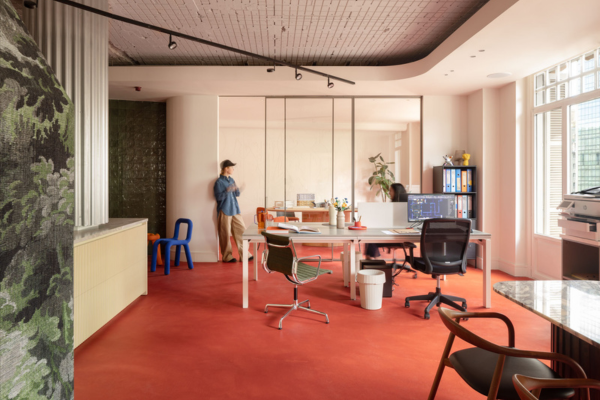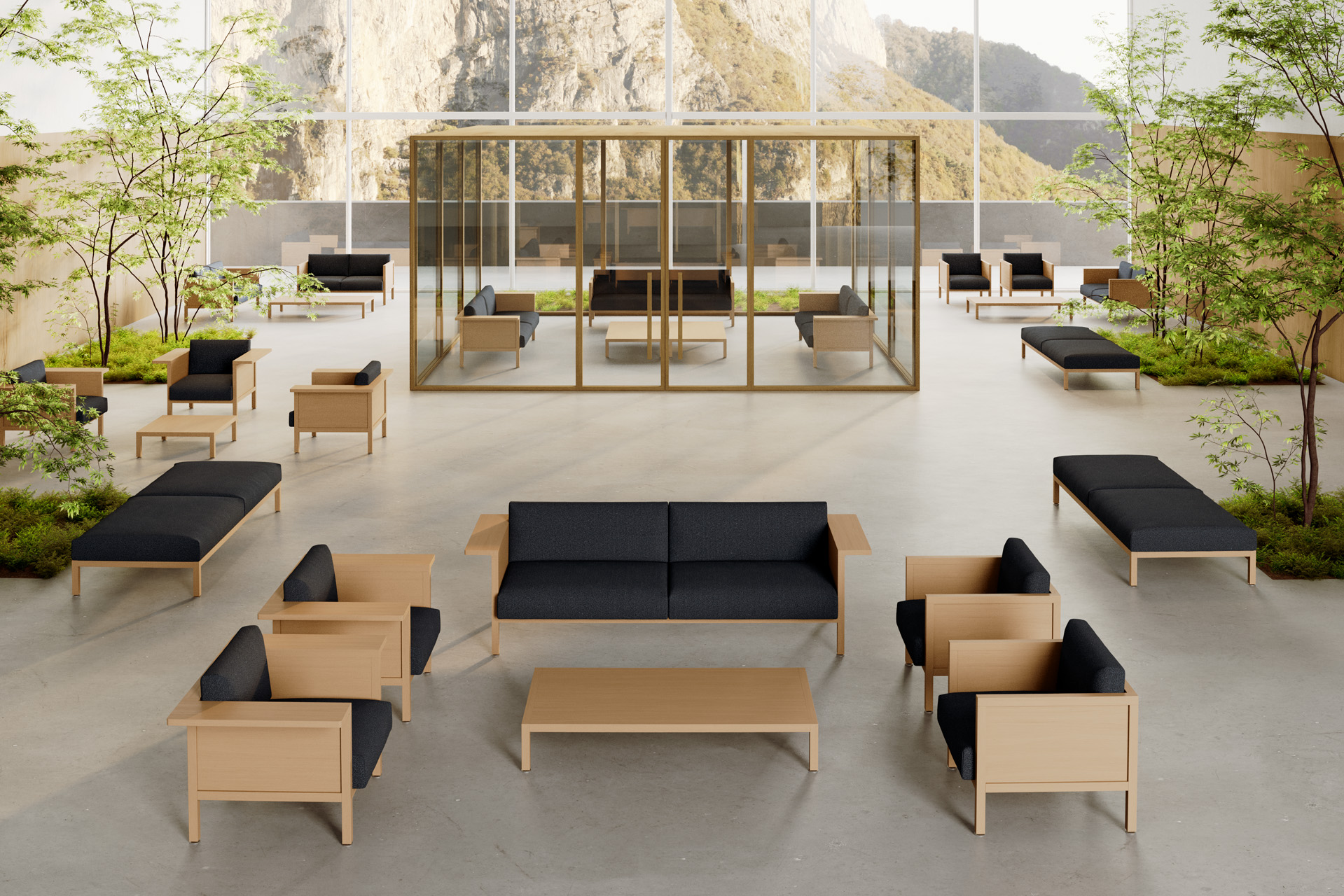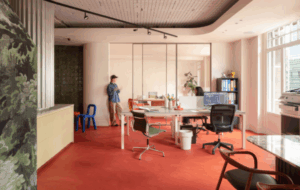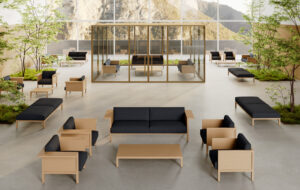
 So there you are, pootling along the streets of Battersea one morning, minding your own business, when suddenly a shock of flame-red hair shoots past you. What else, or who else, could it be but Vivienne Westwood on a bicycle?
So there you are, pootling along the streets of Battersea one morning, minding your own business, when suddenly a shock of flame-red hair shoots past you. What else, or who else, could it be but Vivienne Westwood on a bicycle?
It’s nice to think of the grand dame of fashion cycling to work every morning – old-fashioned basket fixed to the front, tweed skirt flapping around her ankles. OK, so the outfit is imagined – although in keeping with her trademark style, I think you’ll agree – but the rest is true. “It’s quite a sight,” says Steve Jensen, director of London-based architecture practice Anarchitect, with a mixture of fondness and awe. Having designed several of the Vivienne Westwood flagship stores with his former partner Graham Russell, Jensen has got to know Westwood reasonably well. He is not one for gushing sentiments, by any means, but he obviously likes her a lot. “She is a very normal, lovely person and extremely down to earth,” he insists.
Although this latest project, the redesign and extension of her humble studio on Elcho Street, Battersea, will undoubtedly put that relationship to the test. While Westwood continues to work almost like an artisan, taking a hands-on role in the design and construction of her clothes, she has a savvy business team behind her which was instrumental in pushing this awesome scheme through.
“We have had a lot of creative freedom and feel extremely privileged, but it is also quite scary,” says Jensen. “And, of course, it’s a loaded project because it is Vivienne Westwood. The last thing you want to do is make a pastiche of her work – but you don’t want to ignore it either.”
Apart from the famous logo (the majestic orb and satellite), that will greet visitors on entering the studio, there is nothing particularly “Westwood” about the new building. Although it will, like her fashion, be making a pretty bold statement. This is largely down to the stunning facade featuring timber skins and copper metal mesh, which will be treated in an effort to maintain the rich golden tones.
It is not meant to be flash – and that’s certainly not the architect’s style, anyway – but it promises to be a key building and one that will be a welcome addition to the area. Apart from the overbearing presence of the Foster+Partners’ Albion Riverside building, it is characterised by a smattering of nondescript factory buildings and warehouses, of which the original Vivienne Westwood studio is one.
“They were really struggling when they first started,” says Jensen, explaining the modest nature of the two-storey brick construction. “But they have remained faithful to it.” So faithful that there was never any question that it might be pulled down. Instead, it will remain in operation while the extension is being built. A fully functioning workshop, the building has been the heart of the Westwood operation for the past 12 years. This is where the all-important designing, cutting, making and machining of samples goes on, with the administration and marketing teams squeezed in for good measure.
To call it a hub of activity is something of an understatement. There can be between 40 and 60 people in there at any one time. The extension will provide four new floors, with more room for the designers, in particular. Logistics and the stockroom will be on the ground floor, with another stockroom and archives on the first. “The way I look at it is that you have this smooth sophisticated layer to the building, and then the underbelly [the original studio],” says Jensen. “It is a bit like when you see a duck slowly moving along the water, but you know that underneath, its feet are paddling madly away.”
He could arguably have made it easier for himself, and the engineers, by simply sticking a neat box at the tail end of the existing building. But the cantilever concept won through, inspired by some images Jensen came across of a diver teetering on the edge of a diving board. “It is quite a career-defining project,” he admits. “If it falls down, I’ll end up a deckchair attendant in Australia.” It definitely won’t fall down. The piles required to support the hovering structure will be phenomenally deep and Jensen and the rest of the Anarchitect team have more than enough expertise to pull it off. They are doing their own quantity surveying, for a start.
Apart from the gravity-defying aspect of the scheme, it is some achievement to try to reconcile the old building with the new. Far from detracting from the existing structure, the journey into the new building draws attention to it. From the entrance, visitors will walk up a metal staircase that opens out into a glass box on the second floor. “At this point, you will be looking right down on to the old roof,” explains Jensen. This is where the transitional nature of the project becomes apparent – where Westwood has come from and where she is going. “In that way, I suppose it is quite symbolic, and I think it is important for people to understand the progression.”
The staircase leads back up into the new building and finally up to the roof, which will be decked and decorated with plenty of greenery. Westwood is a bit of a plant lover, it turns out, so much so that they plan to rescue existing plants and repot them for placement on the roof. Jensen is also attempting to save a tree in the vicinity, at Westwood’s request, by moving the foundations.
The fourth and final studio space, which will start off as a meeting room but can be appropriated for workspace when required, will be on the roof, clad in beautiful black ceramic tiles. Jensen anticipates some lively parties up there – or perhaps that is just wishful thinking. In any case, there will be some traditional wrought ironwork in place to ensure safety at all times and provide a decorative flourish, or “garnish”, as he calls it. “Vivienne famously reappropriates historic ideas, so we are doing a bit of that as well,” he says with a grin.
You can’t imagine Westwood won’t appreciate what amounts to a very sensitive, although still ambitious, project. She hand wrote a letter to Wandsworth council’s planning department politely requesting permission for the scheme. Her main stipulation was that there should be lots of natural light into the building – a request that will be more than satisfied with the application of vast swathes of glazing to the front of the building, facing south. And yet while she most definitely approves of the design, Jensen thinks a part of her would secretly like to keep things small and cosy, a bit like a cottage industry. It’s too late for second thoughts now, of course. The first stage of the building work is about to be put out to tender, with construction scheduled to start at Christmas. And besides, someone’s got to give Foster a run for his money. Why shouldn’t it be Westwood?

